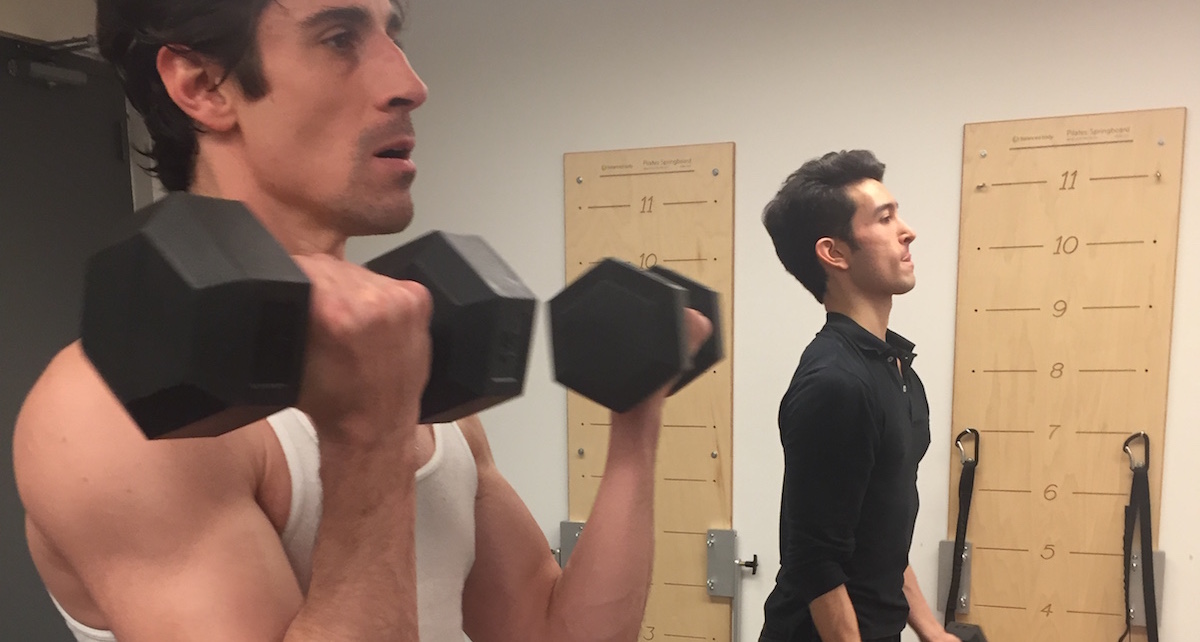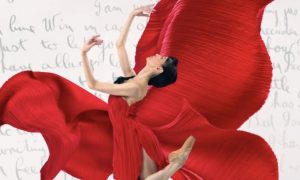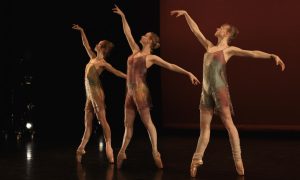Sometimes, it takes a setback or a change in the norm for a true revelation to occur. Maybe a teaching opportunity makes a dancer see that his/her real passion is leading others. Or perhaps it is through an injury that a dancer discovers that a side hobby can become a business venture.
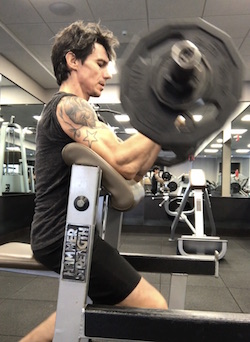
NYCB Principal and founder of Dancer Fit, Joaquin De Luz. Photo courtesy of De Luz.
For New York City Ballet (NYCB) Principal Joaquin De Luz, it was a back injury in 2007 (when three doctors told him he’d never dance again) that forced him to up his cross-training and do some intense rehabilitation research. With his mind set on getting stronger and back on stage, De Luz says he became a “gym rat” and started to develop a strengthening program for dancers. Then, when other health issues kept him off stage for the first few months of 2016, De Luz took his studies one step further and received his personal training certification through National Academy of Sports Medicine.
Most recently, De Luz is co-founder and designer of the NYCB Strength and Conditioning Program, along with physical therapist Dirk Hartog and NYCB corps de ballet dancer Giovanni Villalobos. Although the NYCB program has been in its pilot season and only available to the male company dancers, starting this month, the program will expand and open up to all dancers.
In the meantime, De Luz has also been developing his own Dancer Fit program (@joaquindeluz_dancerfit on Instagram), in which he works one-on-one with some of NYCB’s top dancers, including principals Sara Mearns and Andrew Veyette, and corps members Sara Adams and Emilie Gerrity, and also non-dancers looking for guidance in being lean and strong. De Luz hopes to further develop and brand Dancer Fit in the coming months, with ideas including a subscription-based website and an app.
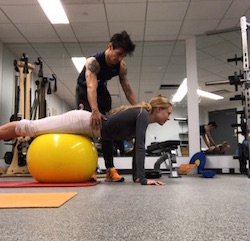
Joaquin De Luz working with NYCB Principal Sara Mearns. Photo courtesy of De Luz.
“My idea is to develop a two-sided program,” De Luz tells Dance Informa. “One part is the training for dancers but also training non-dancers using some of the principles we use in our training. It works wonders for both!”
On cross-training for dancers, De Luz says, “It’s not only important, I believe it’s imperative! I wish I had started earlier. There are more and more articles about it, and companies around the world are catching on to it. Think about it – any sports team has a pre-season when they train to get ready for the playing season, and they don’t just play games to get ‘in shape’ but train specific areas that need to be addressed. Why should it be different in the ballet world?”
He goes on to list several benefits of cross-training, including injury prevention and addressing muscular imbalances, cardiovascular improvement, muscle endurance, stamina, lifting strength (especially for the male dancers) and overall strength.
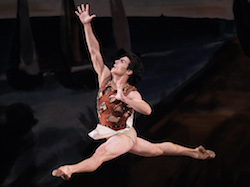
Joaquin de Luz in NYCB’s ‘Prodigal Son’. Photo by Paul Kolnik/New York City Ballet.
When working with a dancer, De Luz says he takes into consideration his/her unique issues, areas of weakness and goals. In the NYCB Strength and Conditioning Program, for instance, dancers can sign up for one of three daily time slots, during which De Luz or one of the program’s trainers will work with them, alternating upper body, lower body and conditioning.
“We do assess the needs of specific dancers and advise them on what to do to reach their goals,” De Luz explains. “Our goal, however, is to get them away from the medical team and finish seasons healthy and strong.”
While De Luz’s involvement in Dancer Fit is part of his transition away from the stage, he says his 30 years of dancing has taught him much about the human body and will inform his teachings as a personal trainer. In addition, Dancer Fit satisfies him in ways that being a performing artist does not.
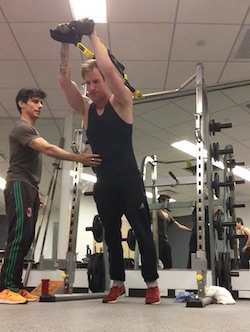
Joaquin De Luz working with NYCB Principal Andrew Veyette. Photo courtesy of De Luz.
“As a dancer, everything becomes about you, about preparing for that moment on stage,” De Luz says. “It’s a very self-centered career, and it has to be to make it to the top. Being able to help people and give them what you have learned about the body and well-being feels amazing. I had an older client – a pretty sedentary CEO – write me a letter to thank me because since we had been working out, he has had the best meetings of his life! All because he feels better physically and mentally. Now that’s something. To give!”
De Luz encourages all dancers to take the time to cross-train, a focus that can better enhance their dancing in class, rehearsal and performance. “Go and work out!” he advises. “Seriously! Whether you are a student, professional dancer, retired dancer, teacher or just balletomane, the best project you can start is the one which improves your health and life.”
Be sure to follow Joaquin De Luz’s Dancer Fit on Instagram: www.instagram.com/joaquindeluz_dancerfit.
By Laura Di Orio of Dance Informa.


